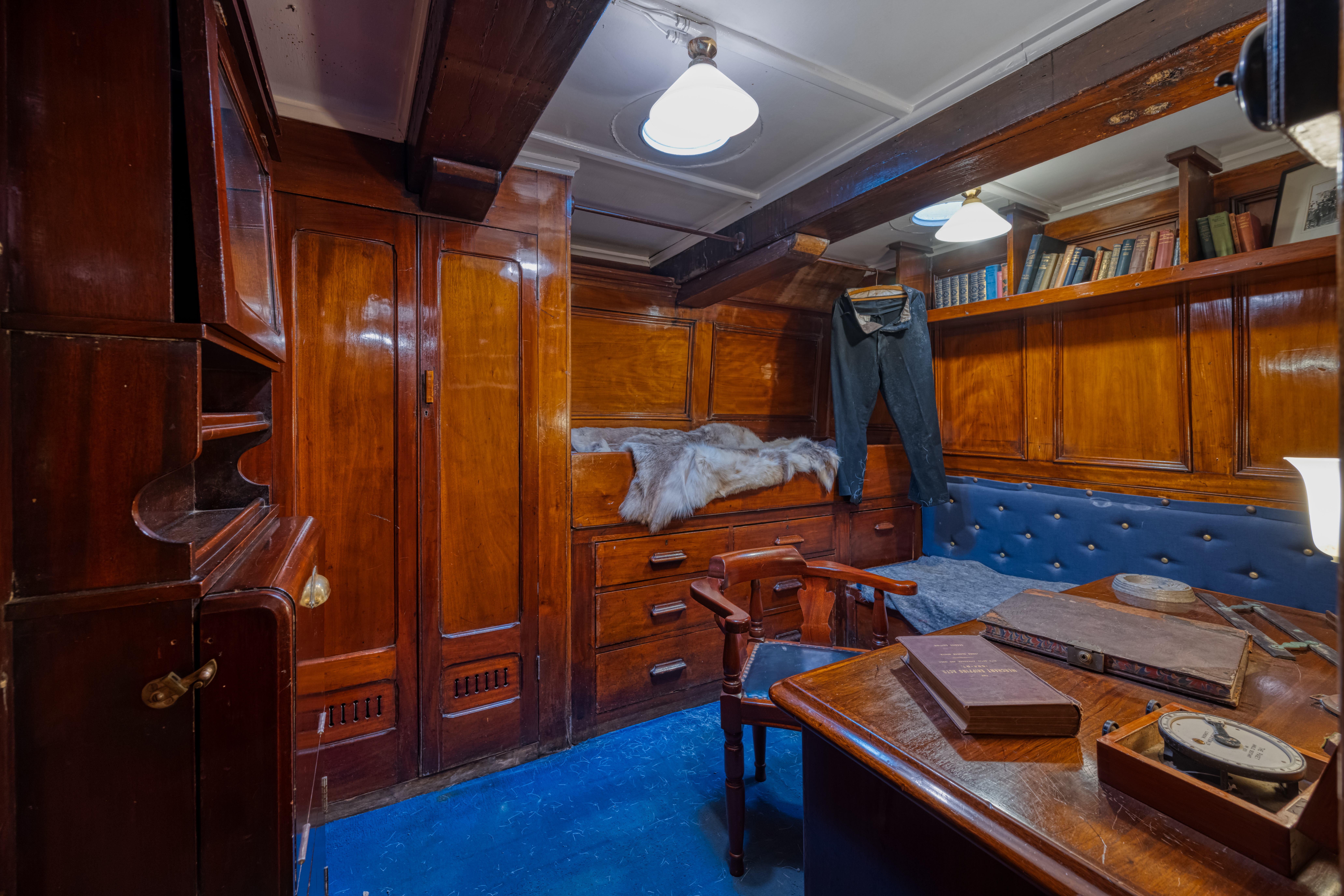Discovery Point & RRS Discovery
Please note the conference dinner is currently sold out. We are working to increase capacity.
The conference dinner will be held at the iconic RRS Discovery where delegates attending the conference dinner will have access to the famous ship for a drink and self guided tour. The EFYE Local Organising Committee are pleased to be working in close partnership with the team at Discovery Point to create a truly unforgettable conference dinner experience. Throughout the night we will have entertainment which will provide you with a taste of Scottish culture.
RRS Discovery & Discovery Point offer fantastic views over the River Tay towards the rolling hills of Fife which create a wonderful scene for any occasion. The keen sense of history throughout the venue contrasts and combines with the latest technology, to offer you the best of both worlds.
The latest addition to Discovery Point is the Discovery Dome, home to the iconic suspended artwork 'Gaia' by renowned British artist, Luke Jerram. The larger edition of the artwork was the centrepiece of COP26 conference in Glasgow. At the Dome be transported to 1901 by an immersive 360-view audio-visual experience over Dundee city and River Tay. Take in the breath- taking view from a formerly inaccessible upper cupola area, and re-discover RRS Discovery from a different, previously unseen perspective’
History of Royal Research Ship Discovery:
At the beginning of the 20th Century Antarctica was still an uncharted wilderness. Exploration was a daunting task, involving a long voyage through remote and tempestuous seas just to reach the continent. The 1901 British National Antarctic Expedition was the vision of Sir Clements Markham, President of the Royal Geographical Society. Naturally cautious, Markham saw the aims of the expedition as purely scientific. Being the first to reach the South Pole was never one of the objectives. By 1900 Markham had raised the necessary funds, now all he needed was a ship, and a man to lead the expedition.
The Ship
As a major whaling centre Dundee’s shipyards had long experience of constructing ships robust enough to travel through the Arctic pack ice. It was this expertise that Markham harnessed to build RRS Discovery, the first vessel to be constructed specifically for scientific research. While the design was based on the great Dundee whalers, there were some modifications to be made. Magnetic surveys were to be an important part of the scientific work of the expedition. To be sure of complete accuracy an exclusion zone round the magnetic observatory was created, with no iron or steel allowed within 30 feet of the area.

Captain Robert Falcon Scott RN
As leader of the expedition Markham wanted “a naval officer in the regular line… young and a good sailor with experience of ships under sail. He must have imagination and enthusiasm… be calm, yet quick and decisive in action.” His search ended with a young naval officer he had first encountered twelve years earlier, Lieutenant Robert Falcon Scott. Devon born, Scott had joined the navy at thirteen. Following a chance reunion with Markham, Scott applied for the post of expedition leader. He was appointed in
June 1900 and promoted to Commander RN at the age of just 33. Though a rather shy man he was also steady, strong and, as later events were to prove, immensely courageous.

Photo Credit: John Pow
Dundee Heritage Trust is the registered charity which manages Discovery Point & Royal Research Ship Discovery and Verdant Works and is responsible for the guardianship, preservation, and portrayal of Dundee’s heritage in ways that educate, inspire and enlighten current and future generations.
